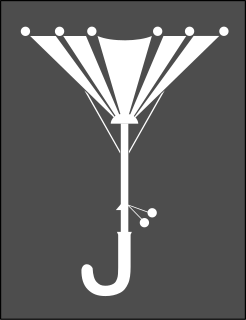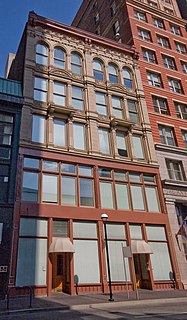
Walter Hamor Piston, Jr., was an American composer of classical music, music theorist, and professor of music at Harvard University.

The 54th Infantry Division was an infantry division of the British Army. The division was raised in 1908 following the creation of the Territorial Force (TF) as the East Anglian Division. During the First World War the division fought at Gallipoli and in the Middle East. The division was disbanded after the war but reformed in the Territorial Army in 1920. During the Second World War it was a home service division and did not see any combat service abroad and was disbanded in late 1943 but many of its component units went to see service in the Normandy Campaign and North-western Europe from June 1944 to May 1945.
Nathaniel Davis Ayer, usually billed as Nat D. Ayer, was an American composer, pianist, singer and actor. He made most of his career composing and performing in England in Edwardian musical comedy and revue. He also contributed songs to Broadway shows, including some of the Ziegfeld Follies.

The Hastings and Prince Edward Regiment is a Primary Reserve infantry regiment of the Canadian Army. The regiment is part of 33 Canadian Brigade Group, one of four brigade groups of 4th Canadian Division. The regimental headquarters and one company are located at 187 Pinnacle Street in Belleville, with additional companies in Peterborough and Cobourg. The Peterborough Armoury houses what was traditionally "B Company" or "Moro Company", and "C Company" or "Cassino Company" is housed in an industrial mall unit on Willmott Street in Cobourg. Normally, the regiment deploys as a composite, Ortona Company, while the HQ/Admin forms Somme Company.

Eduard Holst was a Danish playwright, composer, actor, dancer, and dance master. His name is spelled sometimes Edward Holst or Edvard Holst.

The John Church Company Building is a historic commercial building in downtown Cincinnati, Ohio, United States. Designed by one of Cincinnati's most prominent architects, it was home to one of the country's leading vendors of sheet music and musical instruments, and it has been named a historic site.

The 101st Field Artillery regiment is the oldest field artillery regiment in the United States Army with a lineage dating to 13 December 1636 when it was organized as the South Regiment. It is one of several National Guard units with colonial roots and campaign credit for the War of 1812. For the first 250 years of the unit's existence it served in infantry formations.

The 26th Infantry Division was an infantry division of the United States Army. A major formation of the Massachusetts Army National Guard, it was based in Boston, Massachusetts for most of its history. Today, the division's heritage is carried on by the 26th Maneuver Enhancement Brigade.
Samuel Hale Parker (1781–1864) was a publisher and bookseller in 19th-century Boston, Massachusetts, United States. He published musical scores as well as novels, sermons, and other titles. He operated the Boston Circulating Library, and was among the founders of the Handel and Haydn Society.
The Boston Brigade Band (1821-ca.1863) was a brass and reed band that performed in Boston, Massachusetts, and elsewhere in New England. Some of the musical pieces played by the band were subsequently published as sheet music, including "The Mammoth Cod Quickstep" of 1839. The band received acclaim in its day, particularly for its combination of both brass and woodwind instruments.
John Ashton was a merchant and music publisher in Boston, Massachusetts, in the 19th century. He owned a "music & umbrella store" at no.197 Washington Street which sold "all the new and fashionable music" ca.1819-1844. He manufactured and sold musical instruments; tuned pianos; and published and sold sheet music "of marches, waltzes, rondos, variations, quadrilles, gallopades, dances, &c. ... arranged for the band, orchestra, piano forte, guitar, flute, violin, organ &c." Among the composers represented in Ashton's stock: Comer, Joseph Haydn, Knight, Paddon, Russell, Shaw, Webb, Charles Zeuner. The firm "John Ashton & Co." was dissolved on January 1, 1844 with notice that the business will "be continued at the old stand, 197 Washington Street, by E.H. Wade."

The American Star Bicycle was invented in 1880 by G. W. Pressey and manufactured by the H. B. Smith Machine Company in Smithville, Burlington County, New Jersey. It was characterized by a small wheel in front to avoid the problem of tipping forward inherent in other high wheelers. A Star bicycle was photographed being ridden down the steps in front of the United States Capitol in 1885 to demonstrate its longitudinal stability, and Star bicycles were used for the sport of bicycle polo in the mid-1880s. Pressey sued Smith in 1887 for royalties. The name "Star" was attributed to the double star arrangement of the spokes.

The Fadettes of Boston (1888-ca.1920) was an all-women orchestra based in Boston, Massachusetts, and directed by Caroline B. Nichols. "The original group of six expanded to twenty by 1898" with "a first violin and director, four additional first violins, four second violins, two violas, two violincellos, two contrabassos, kettle-drums and a bass, two flutes and piccolo, two clarinets, two cornets, two French horns, three trombones, snare-drum and 'traps,' and piano-forte." The group incorporated in 1895 as "the Fadettes of Boston."
The 222nd Infantry Brigade was a Home Service formation of the British Army that existed under various short-lived titles in both the First and Second World Wars

Smiling Sammy: Fox Trot is a World War I era song released in 1917. The music was written by Arthur M. Kraus. The song was published by Jerome H. Remick & Co. in Detroit, Michigan. On the cover of the sheet music, there is a soldier marching with a gun resting on his shoulder. The cover artist is Tony Sarg. The song was written for piano.

I'm Writing to You, Sammy is a World War I era song released in 1917. Lew Brown wrote the lyrics. Al Harriman composed the music. The song was published by Broadway Music Company of New York, New York. On the cover of the sheet music is a drawing of a soldier, from the shoulders up, inside of a star. Artist E.E. Walton designed the cover. The song was written for both piano and voice.

"You Great Big Handsome Marine" is a World War I era song released in 1918. Most sources solely credit Harold Dixon as both the composer and lyricist, as it is listed on the sheet music. Other sources give composer credit to Dixon and lyricist credit to I. Chapman. The song was published by Dixon-Lane Publishers of St. Louis, Missouri. On the cover is a soldier standing at attention. A battleship is behind him, and planes are flying overhead. The song was written for both voice and piano.

"When the 'Yanks' Come Marching Home" is a World War I era song released in 1917. William Jerome wrote the lyrics. Seymour Furth composed the music. It was published by A.J. Stansy Music Co. of New York City.
Grace Leboy Kahn was an American composer.

Fleta Jan Brown Spencer was an American songwriter, composer, pianist, and singer.















